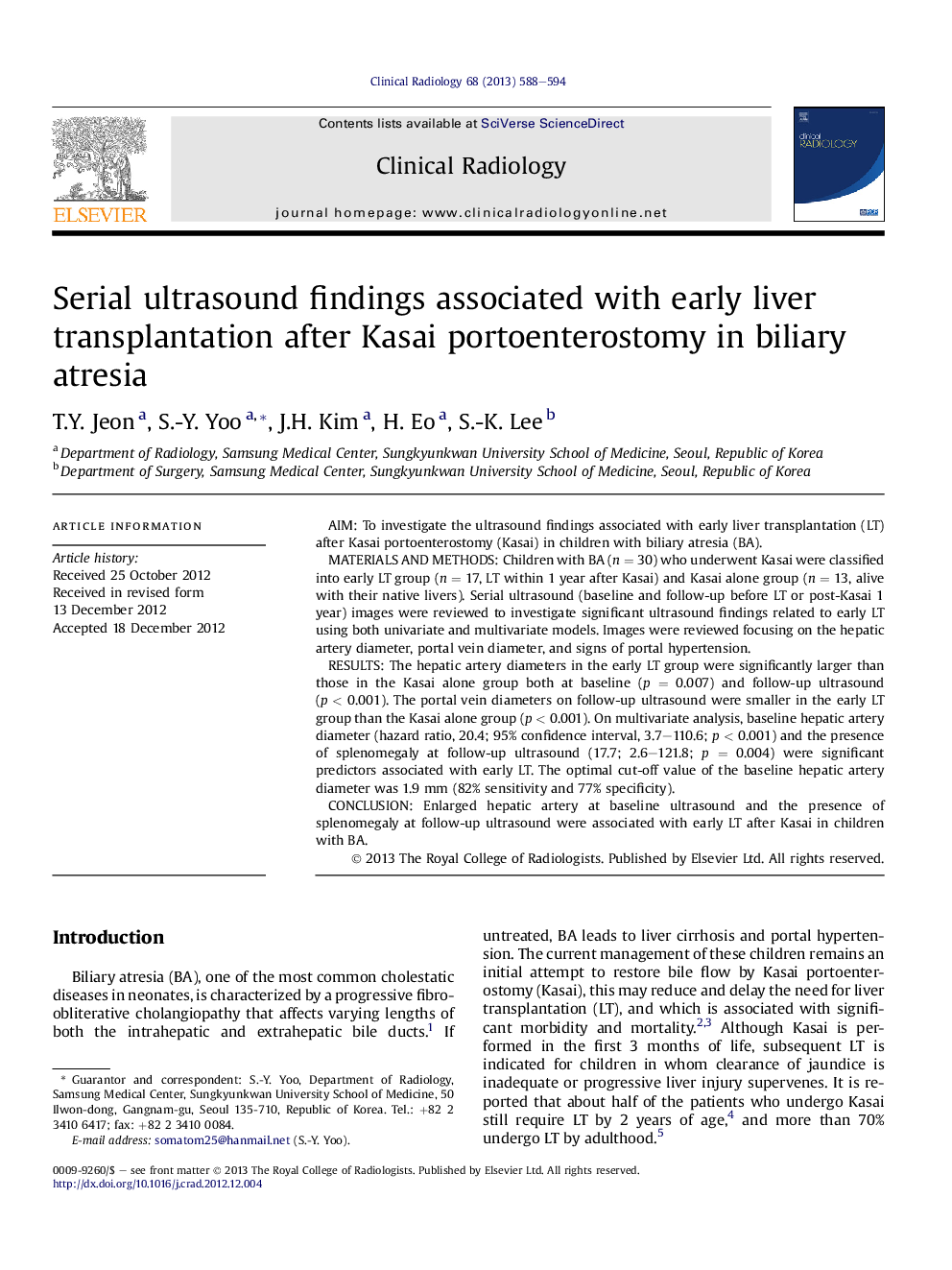| Article ID | Journal | Published Year | Pages | File Type |
|---|---|---|---|---|
| 3981896 | Clinical Radiology | 2013 | 7 Pages |
AimTo investigate the ultrasound findings associated with early liver transplantation (LT) after Kasai portoenterostomy (Kasai) in children with biliary atresia (BA).Materials and methodsChildren with BA (n = 30) who underwent Kasai were classified into early LT group (n = 17, LT within 1 year after Kasai) and Kasai alone group (n = 13, alive with their native livers). Serial ultrasound (baseline and follow-up before LT or post-Kasai 1 year) images were reviewed to investigate significant ultrasound findings related to early LT using both univariate and multivariate models. Images were reviewed focusing on the hepatic artery diameter, portal vein diameter, and signs of portal hypertension.ResultsThe hepatic artery diameters in the early LT group were significantly larger than those in the Kasai alone group both at baseline (p = 0.007) and follow-up ultrasound (p < 0.001). The portal vein diameters on follow-up ultrasound were smaller in the early LT group than the Kasai alone group (p < 0.001). On multivariate analysis, baseline hepatic artery diameter (hazard ratio, 20.4; 95% confidence interval, 3.7–110.6; p < 0.001) and the presence of splenomegaly at follow-up ultrasound (17.7; 2.6–121.8; p = 0.004) were significant predictors associated with early LT. The optimal cut-off value of the baseline hepatic artery diameter was 1.9 mm (82% sensitivity and 77% specificity).ConclusionEnlarged hepatic artery at baseline ultrasound and the presence of splenomegaly at follow-up ultrasound were associated with early LT after Kasai in children with BA.
